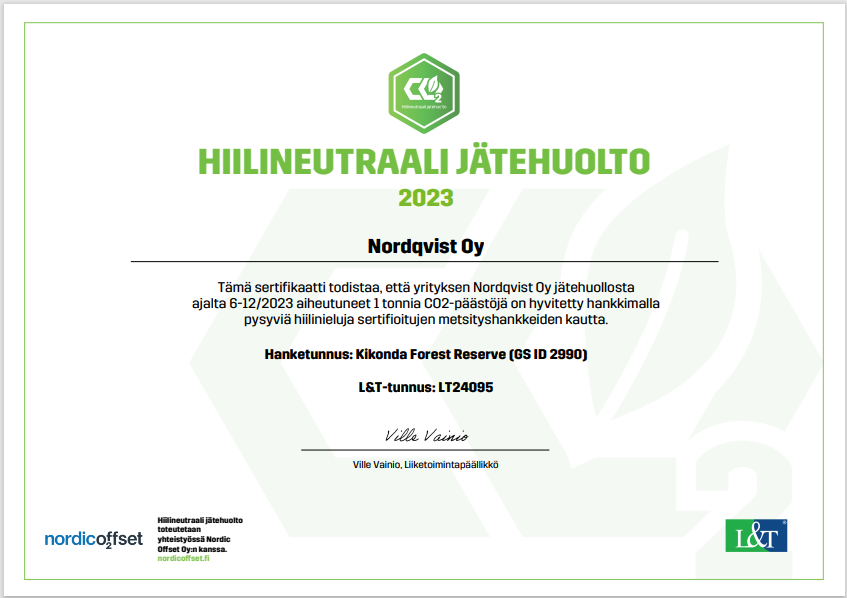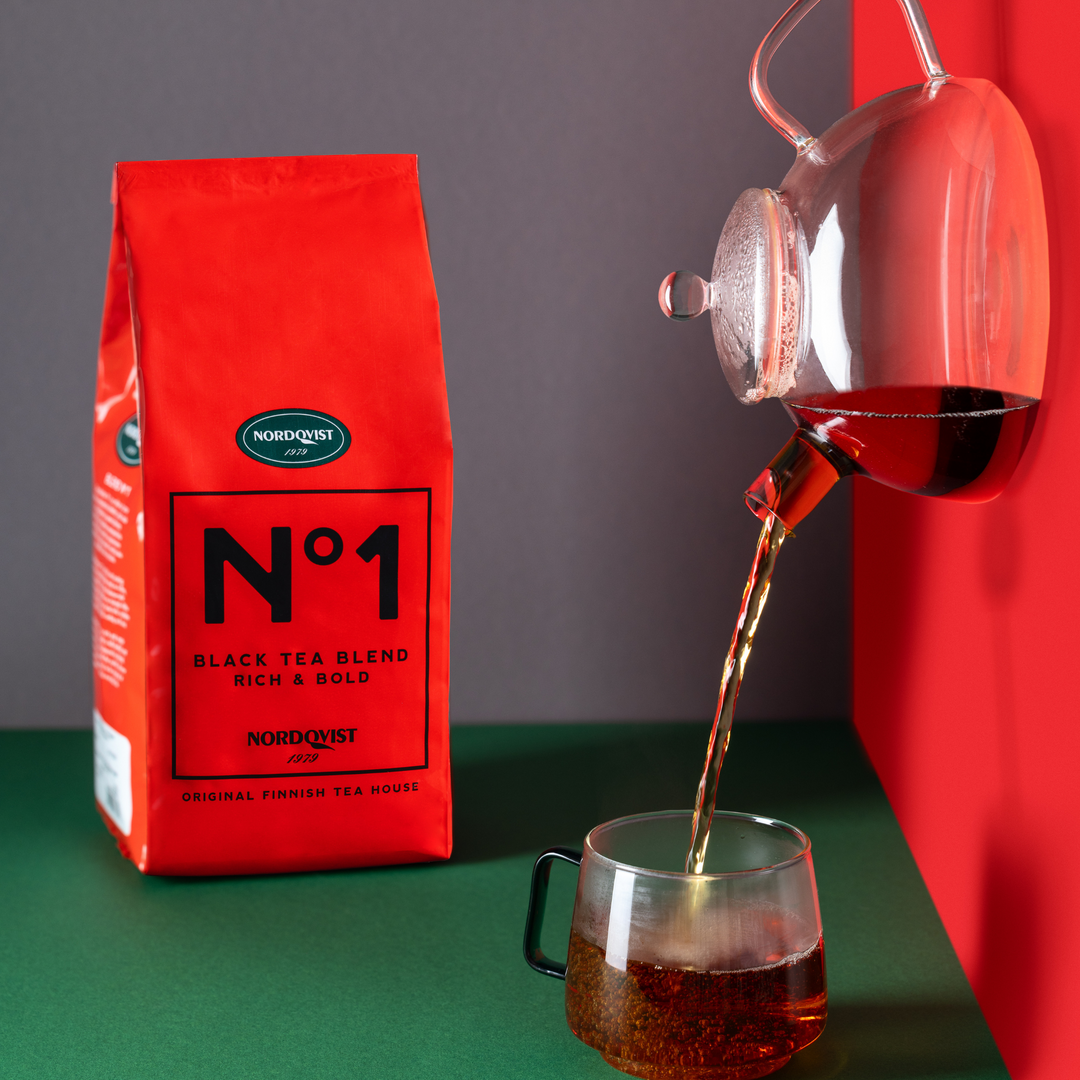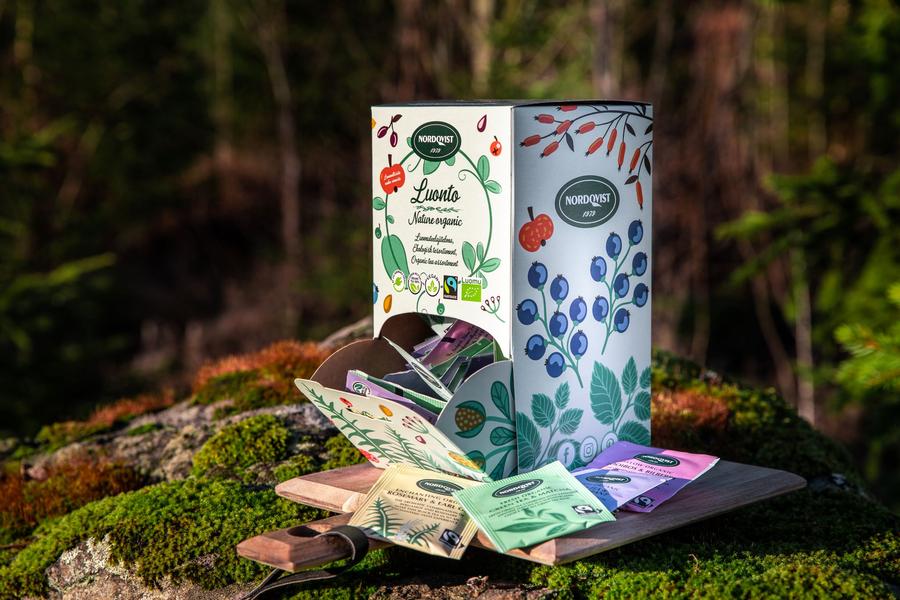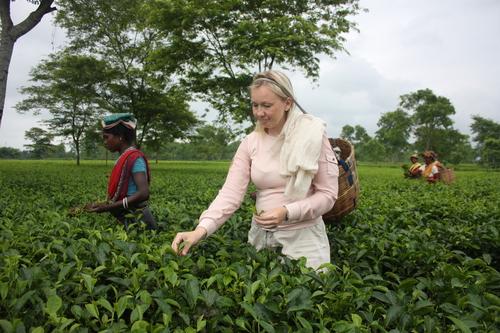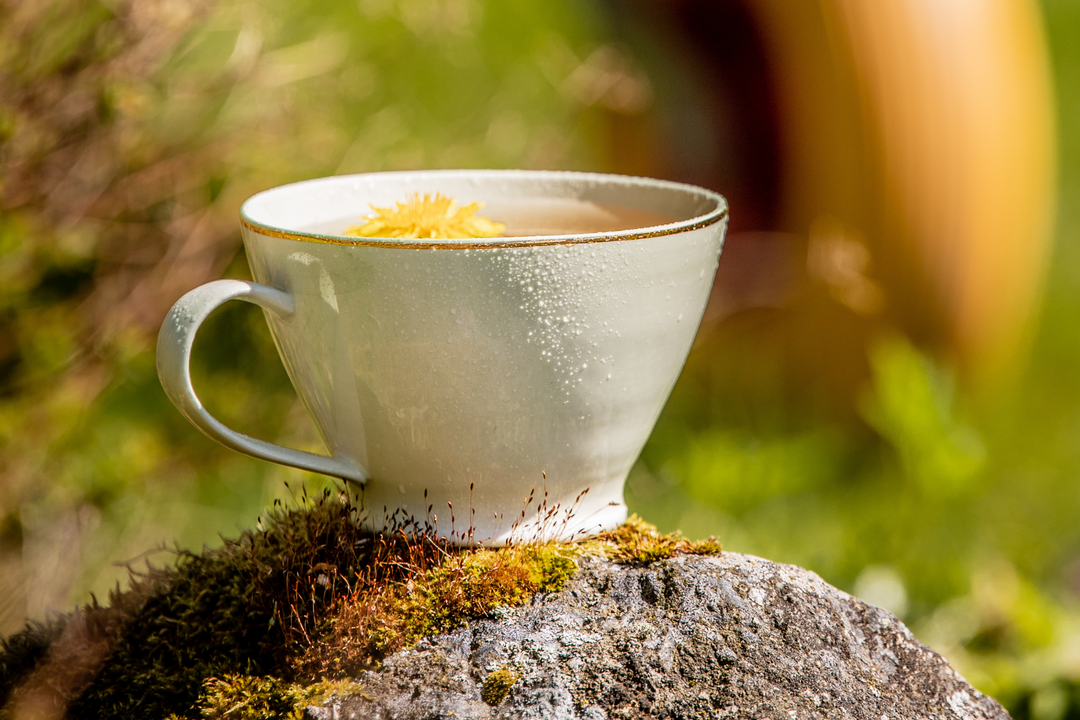What makes tea Finnish?

Finnish tea
Finns' tea drinking is on the rise. There is especially demand for high-quality, ethical tea and new flavor combinations. Alongside the familiar black tea, the entire spectrum of the tea world has emerged, from matcha to white tea and rooibos.
Finnish tea culture is enlightened, and tea drinkers want to know how the products are made. It is no longer a drink that is only brewed as a substitute for coffee. Instead, tea is drunk enjoying every cup.
However, tea is not originally a very Nordic drink. Now we will tell you how you can also enjoy domestic tea.
What makes tea domestic?
All teas, including black, white and green tea, are made from the leaves of the tea bush. Different tea qualities are created when tea leaves are collected at different stages of the bush's growth and processed in different ways. For example, white tea is made from new leaves or their buds.

The most favorable residential areas for the tea bush are mainly in Asia, such as China and India. On the other hand, the natural conditions in Finland do not suit the plant. For Nordqvist, tea comes from selected regions such as Japan, Kenya and Sri Lanka.
The main raw material for tea therefore often arrives in Finland from abroad, but many other things can make tea Finnish. Domesticity comes from the work done to make the tea, the Finnish ingredients used in the tea, and the packaging designed and manufactured with domestic expertise.
The teas are made in Finland
The production of tea can take place in Finland, such as at the Nordqvist factory in Ilvesvuori, Nurmijärvi. Then the tea is brought from its place of growth here in the North. In the hands of Finnish professionals, unforgettable tea experiences are made from tea and other raw materials. Domesticity is thus created through work and competence.

The production of tea employs not only local tea growers abroad but also Finnish tea manufacturers and packers at home. At Nordqvist, more than one million kilos of tea are seasoned and packaged annually.
Domesticity tastes like berries
Although tea is not a Finnish plant, many ingredients added to tea can be. New nuances are conjured up in the theme flavors with berries, fruits, herbs and other spices. This way you get unique themed pictures that charm with their ingenuity.
Domestic berries such as blueberries, lingonberries and sea buckthorn go well with tea. At Nordqvist, freeze-drying technology is utilized in the use of berries. In this way, they retain their fresh taste and color wonderfully until the moment of drinking.
So-called herbal tea or herbal decoction could be made from completely domestic raw materials, in which no tea is used at all. A herbal decoction can contain, for example, lemongrass, mint and clover. This way there is no caffeine in the brews either.
Finnish design can be seen in the packaging
We often focus on what a product contains. Now, however, it's worth looking at the tea packages. Our new Luonnon Tee series is packed in wonderful packaging that draws from Finnish nature. In the look of the series, the growths of forests and fields, from blueberries to birch leaves, shine. They are designed under our own roof, listening to customers' wishes.
Domesticity has bitten down to the roots of the packaging, as the packaging materials also come from a domestic manufacturer. Finland's nature includes cleanliness, and so the packaging can be recycled along with the cardboard collection.

The key tag tells about being from Finland

A key flag is a sign that tells about the Finnishness of a product or service. It can be granted when at least 50% of the product's costs have been produced or manufactured in Finland. The costs may include, for example, raw materials, packaging materials and personnel costs. In general, the degree of domesticity of Avainlippu products is around 80%. Read more about the Key Ticket and other certificates in our products.





